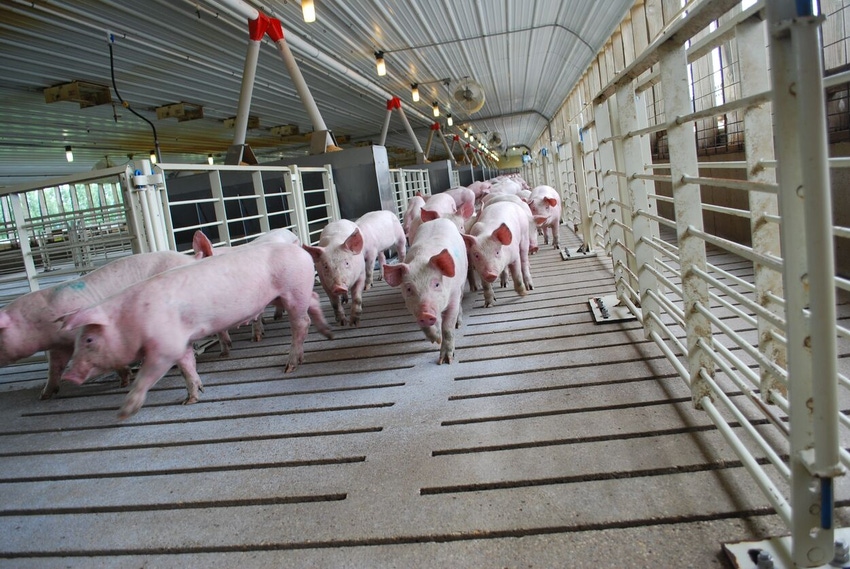Search out savings, but don’t scrimp on herd-health essentials
Stick to vaccine protocols for consistent performance across all pigs, maintain biosecurity to prevent pathogens from entering barns.
February 15, 2024

By Dyneah Classen, DVM, Carthage Veterinary Service
When it comes to cutting costs for a swine operation, producers need to balance the necessity of saving money against what measures should not be compromised to maintain optimal herd health and productivity.
One cost you might be able to influence is feed mitigants. The Swine Health Information Center publishes monthly disease monitoring reports on transmission, which often peaks in colder months. You may not need to buy mitigants in feed in the summer if high temperatures are sufficient to kill viruses and bacteria (unless you’re running a high-health status farm) — it’s similar to people needing to apply higher-SPF sunscreen in June than in December, because of longer hours of UV exposure.
I also recommend wise consideration of your vaccination schedule. I have heard of producers using only a half-dose to vaccinate wean pigs against the likes of Mycoplasma hyopneumoniae bacteria or porcine circovirus type . Although some were fortunate that the herd did not contract infection later, many were not so lucky. A PCV2 outbreak is especially detrimental to pigs near market status, causing weight loss or mortality. The money you saved rationing doses isn’t beneficial if you lose the cost of other inputs you spent getting the pig that close to the finish line without a win.
Even in needing to save money, producers recognize the importance of early preventative care, including vaccinations. One smart way to save may be to wait and dose seasonally — for example, there are more outbreaks of ileitis, in summer months in summer market hogs, so perhaps your veterinarian can advise how to vaccinate against Lawsonia intracellularis closer to that time if it offers a financial break.
I recommend sticking to vaccine protocols for consistent performance across all pigs, and because if you postpone a round, it’s easier to forget it later. Vaccines are a form of insurance and the protection they offer is critical. A properly vaccinated pig has a better chance of showing consistent average daily gain and feed efficiency and may need fewer antibiotics in its lifetime.
Look for opportunities
Stabilizing herds against endemic diseases, even with vaccinations, is another challenge. One tool producers can use to combat M. hyo outbreaks is herd closure and elimination. This has been effective in cutting the incidence of M. hyo over the years; now is the least number of cases I’ve seen since 2007. Producers seem to need fewer antibiotics and enjoy more growth consistency now due to previous closures.
The problem is that any herd closure is costly and stressful. While M. hyo is undesirable, unless you are seeing a big problem downstream, you may not be able to justify the expense of a 40-week closure for elimination. If, however, your herd experiences a concurrent or more serious disease outbreak, such as porcine reproductive and respiratory syndrome, it is more worth going through the load, close and homogenize steps to get rid of that and M. hyo at the same time.
An ounce of prevention
Maintaining biosecurity is vital to prevent pathogens from entering your barns and triggering interventions such as antibiotics and more frequent veterinary visits — or worse, higher mortality rates. Even when ill animals recover and survive, their lungs or digestive system might be damaged enough to reduce their ADG and feed conversion efficiency.
Biosecurity means doing what you can to reduce the chances of infectious disease via people, animals, equipment or vehicles. It can be a complex set of filters and electronics and changing houses, or as simple as basic barriers coupled with protocols to which you strictly adhere. For instance, if you can’t afford full facility filtration or even a sizable shower and changing room, you can at least establish a small anteroom space divided into “dirty” and “clean” zones to change outerwear and boots and wash hands before going into a barn to decrease pathogen transmission.
Another major disease vector is trucks moving in and out of farms, especially for market loads at the end of a closeout. A full wash at each passage isn’t cheap, so if you can’t justify this kind of expense, think of ways you can work around it without sacrificing biosecurity. If a partial wash costs less than a full wash, it may be better than none at all.
Also, establish clear lines of separation during loading and unloading — don’t allow the truck driver in chutes or barns, and establish separate people to stay in the trailer from those on the ground, neither crossing into the other environment during loading/unloading. When moving animals into your barn, be sure you are loading in your healthiest animals first.
In truck washing, I would not advise cutting corners in sow spaces. Tracking in pathogens to gestating pigs and piglets may result in infections to the young animals and leave a negative impact, impeding their health and growth performance even into the market hog stage.
Evaluate your resources
Finally, reexamine your inputs to see where you might use lower-cost products. If you make the change to a generic that costs less, be sure it does at least as good a job — Carthage Veterinary Service has switched disinfectants to clean our barns, and while the new one costs less and uses different chemistry, it achieves the same results.
With our buying power, CVS can assist producers with negotiating lower-cost products and vaccines so they don’t have to sacrifice safety for savings.
You May Also Like



